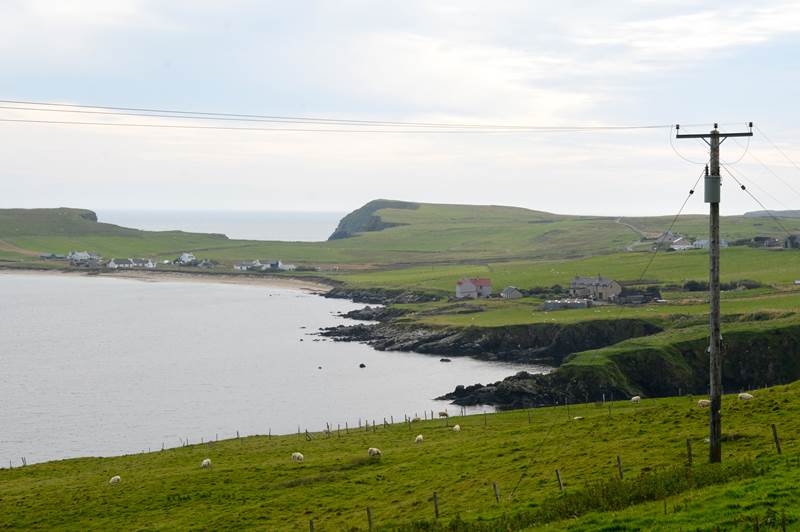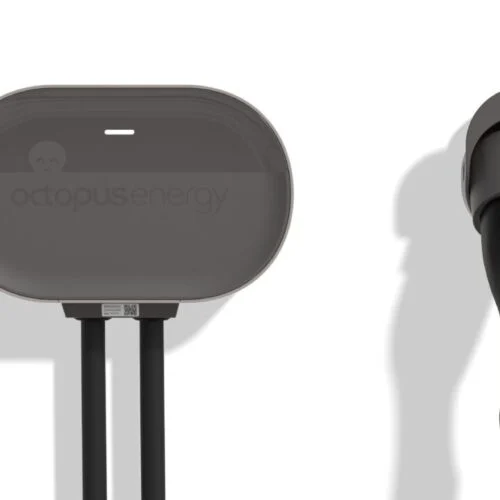A five-year smart grid project to integrate renewables onto Shetland’s local energy system using large scale storage and new forms of network management has been hailed a success by Scottish and Southern Electricity Networks (SSEN).
The £18 million Northern Isles New Energy Solutions (NINES) project combined domestic demand side management (DSM) with a 1MW battery at Shetland’s main power supply, Lerwick Power Station, and new monitoring and control systems to form an advanced Active Network Management (ANM) system.
The ANM was then used to manage five renewable energy schemes connected to the distribution electricity network. According to SSEN, by using this smart technology to manage how and when the energy is used, while maintaining system reliability and safety, more than 8.545MW of new renewable energy has been connected on Shetland.
This represents a trebling of renewable energy capacity, which is being stored in the Lerwick battery at times of low demand, along with capacity from new storage heaters and hot water tanks installed by Shetland based Hjaltland Housing Association. This was managed by the ANM to be used at a time when it was needed to supply people with electricity or heat.
The combination of these technologies has resulted in the daily average of renewable generation on Shetland reaching 30% of energy requirements, while a 10% reduction the the diesel used at the power station has also been recorded.
Stewart Reid, head of asset management and innovation at SSEN, said: “By creating flexible demand on the islands, through the use of smart technology and energy storage, we have made progress in exploiting and maximising Shetland’s renewable generation potential and reducing the generated output from thermal power stations.
“This was an important achievement as it will inform the transition to a low carbon economy. It also offered us the opportunity to trial the technology in an environment which could then be applied to the wider-GB electricity network.
The ANM identifies when energy demand is high and what available energy there is in storage. It then automatically rebalances the network to make sure people receive the electricity they need. The same is true if there is low demand but higher renewable energy generation, which is sent into the large scale and domestic storage systems to wait until it’s required.
If there is not enough energy being generated or in storage it will then automatically call on thermal generation to help balance the system.
By bringing together domestic storage systems with a utility scale battery, generation assets and advanced control systems, Reid says the project has also shown homes can play a role in the ongoing energy system transition.
“NINES demonstrated that it was possible to fully integrate domestic properties with an ANM system and allow appliances and heating systems in the home to play their part in meeting the challenges of de-carbonising the UK’s energy systems,” he said.
“In Shetland this participation has not only served to reduce peak demand on Shetland, it has also allowed a higher utilisation of renewable energy. There is significant roll out potential in the UK with over 2.2 million homes currently using electrical heating systems, which could adopt similar technology.”
The NINES project proved more successful in gaining benefit from domestic assets than other recent projects, such as WPD’s Sunshine Tariff trial which tested the ability of time of use (ToU) tariffs to promote domestic demand side response. It concluded that the practicalities of using such a tariff meant it wasn’t “feasible under market conditions”.
Thanks to the learnings gained from NINES, new ANMs are being rolled out elsewhere to help the transition towards low carbon networks and realise smart grids.
Such a project could help SSEN improve its efforts in other parts of the country, such as the Isle of Wight where solar generators are facing months of possible curtailment as SSEN and National Grid conduct work that according to one generator is a result of “years of under investment”.
SSEN is also sharing the project findings with the wider energy industry to provide insight into the technology and processes required for the electricity industry’s transition from a Distribution Network Operator (DNO) to a Distribution System Operator (DSO) role.
The success of the project bodes well for Hitachi and its partners, who are working on a similar smart grid project on the Isles of Scilly using new software platforms to manage supply and demand through renewables, energy storage and electric vehicles.






